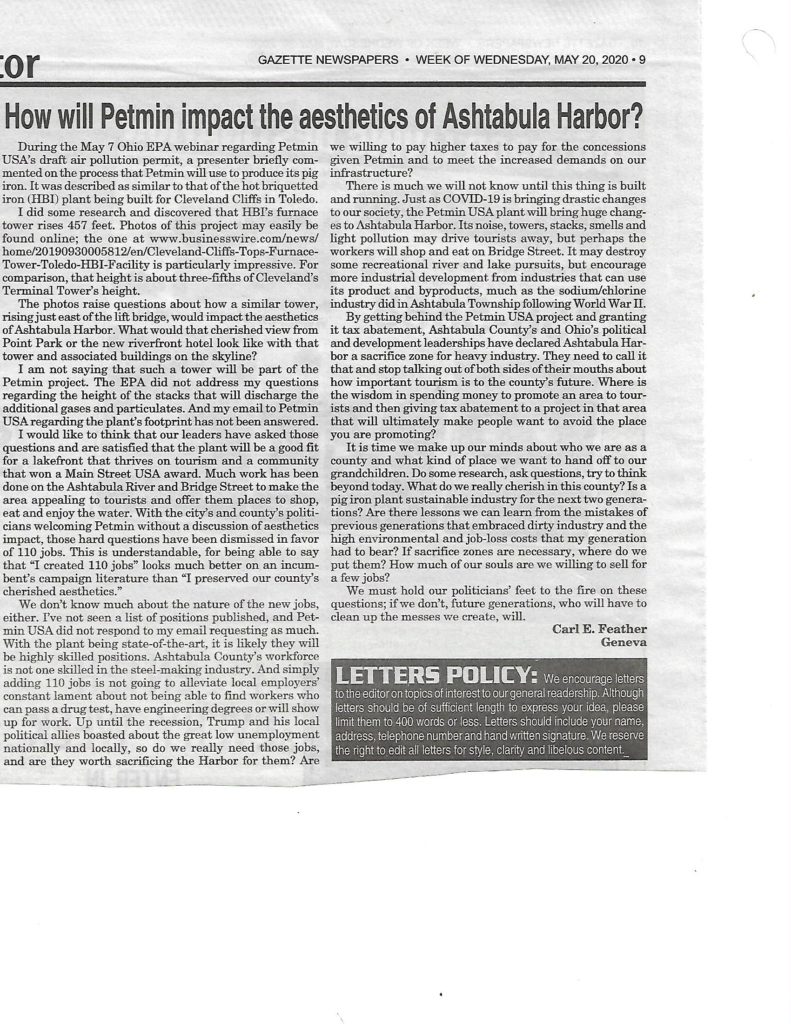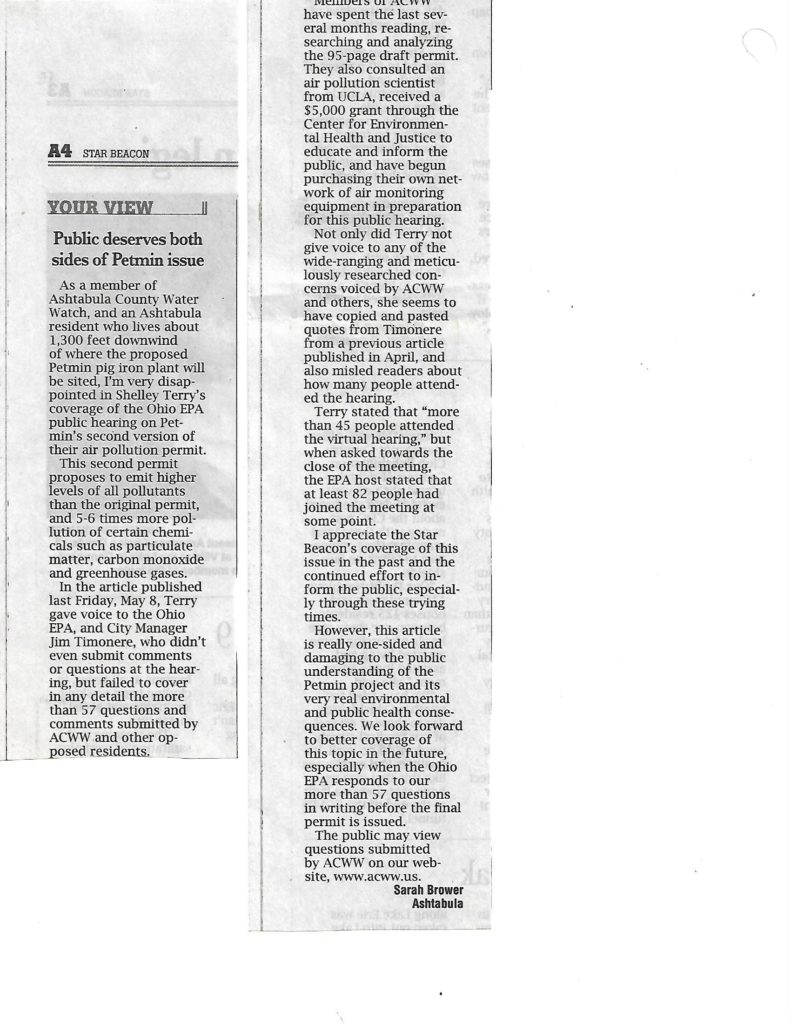

By Sarah Brower
Among the many uncanny and unforeseen consequences of the COVID-19 pandemic have been drastic reductions in air pollution in China, the United States, and other industrialized nations. It’s estimated that the number of lives saved by improvements in air quality will outnumber lives lost to this pandemic. We have gone to historic extremes to save lives during this crisis. We have shut down massive sectors of the economy and then tried to stimulate it
through the CARES Act, adding another $2 trillion to our $24.3 trillion national debt to keep our economy liquid enough to prevent a great depression. More stimulus packages are expected.
We don’t go through even a fraction of this trouble to prevent deaths from air pollution, which, according to a 2013 Massachusetts Institute of Technology study, causes 200,000 premature deaths in the US every year. Are the lives lost to a respiratory virus more sacred than lives lost to respiratory disease caused by air pollution? Why don’t we put everything on hold to prevent deaths from air pollution? It must be because air quality has improved so much that the Environmental Protection Agency (EPA) recently thought it was ok to suspend anti-pollution laws and allow facilities to lapse in monitoring and reporting air pollution that exceeds legal limits. On March 26, the EPA issued a
memorandum that goes into effect retroactively (March 13) removing requirements for polluting industries to conduct compliance monitoring, integrity testing, sampling, lab analysis, training, and reporting during the COVID-19 crisis. No end date for the policy was given. Polluters are encouraged to keep internal records, abide by regulations, and may be audited, but the EPA has basically relinquished authority to penalize most violations during this time.
While I’m left scratching my head and signing a few online petitions in response to our national environmental policy decisions, I’m also keeping an eye on the local level, and by local I mean about 1,300 feet away from my backyard where the Petmin pig iron plant smokestack will be emitting hundreds of tons of toxic air pollution each year. In Petmin’s new permit application, they are proposing to emit hundreds of tons more toxic pollution than in their original permit that
already triggered special analysis because the emission of nitrogen oxides is so high. Using a back-of-the-envelope calculation, I figured Petmin’s nitrogen oxide emissions are comparable to adding some 2.5 million cars to Ashtabula roads every day. There are many other serious implications of this permit and it can’t be unpacked here. It is of utmost importance for all Ashtabula residents to attend the virtual public hearing on this permit on May 7, 2020.
You must register online at http://epa.ohio.gov/virtual
When COVID-19 is over, you might want to keep your mask on, except it won’t do any good because the air pollution coming from Petmin will be smaller than a virus.
25 million more cars on the road in Ashtabula – daily?
Editor,
The proposed Petmin USA pig iron plant is asking for a new air permit. The new air permit – with projections of 2 – 6 times higher toxic emissions than the first – will allow Petmin USA to move forward with construction. Petmin’s projected increases are as follows:
Fifty-six tons additional NOx (nitrogen oxides) per year, for a total of 484 tons per year – this is similar to adding 2.5 million cars to the streets of Ashtabula County daily. Over double the amount of SO2 (sulfur dioxide), Particulate Matter10, and greenhouse gases; over five times the amount of Particulate Matter 2.5; and six times the amount of CO (carbon monoxide). All of these pollutants are known to be carcinogenic and toxic to the respiratory system.
In the new air permit application, Petmin USA state the processes have changed and they will need to operate with these new emission totals. If this is true, they could build community trust by offsetting the additional pollution. Perhaps setting up a fund for community health as the community’s health will be compromised with the increased pollution? Or, investing in renewable energies? Agree to pay their fair share of taxes – currently they have been extended 50% tax abatement for the next 10 years. The City could use these funds to set up a health account for its residents or provide programs that improve health.
There are many questions regarding the new air permit – see “32 Questions” at www.acww.us. The EPA will be holding a virtual hearing regarding the permit on Thursday, May 7th at 6pm. Register at http://epa.ohio.gov/virtual. The EPA will be allowing questions and comments until May 11th at 5pm: Email epa.dswcomments@epa.ohio.gov and anthony.becker@epa.ohio.gov, air permit number P0126768 (Petmin USA).
One can not imagine that driving 2.5 million extra cars on the roads in Ashtabula can be good for health – respiratory or otherwise. A greater understanding of what impacts this will have on the community and community health are necessary. If education and options are not considered it feels like “bait and switch.” What solutions can we come up with – together – to help mitigate the pollution before it starts?
With kindness,
Dr. T Gallo